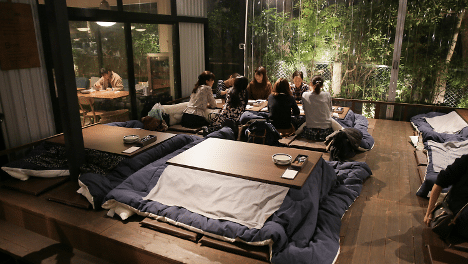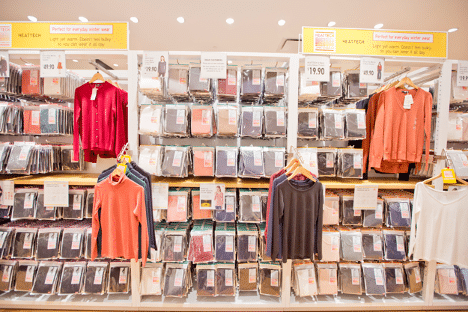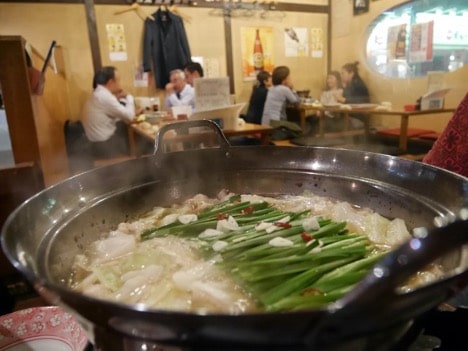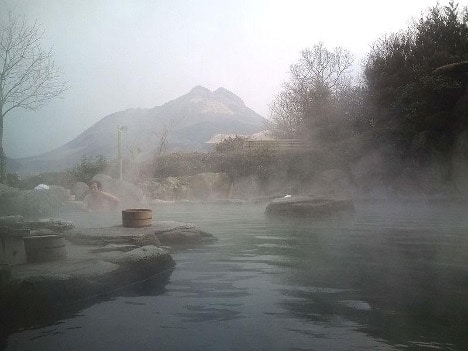Japanese winters can be cold, brutally cold. Data from the Japan Meteorological Agency shows that in 2021, the coldest month of January saw the temperature in Tokyo dip to as low as -2 degrees Celsius, with humidity averaging 57%. Those unfortunate enough to live in the northernmost prefecture of Hokkaido sees temperature as low as -11 degrees Celsius, with humidity averaging 74% in January.
For those who come from and are used to warmer climates, such data confirm the Japanese winter to be a decidedly bone-chilling and soggy affair. Thankfully, Japanese innovation, some of them centuries old, has made the dead of the winter much more tolerable for the country’s residents. Some of the following items are worth taking up by any new foreign resident surviving through a Japanese winter for the very first time.
1. Kotatsu, the Japanese Heated Table
Turning on the air conditioner just to heat the whole apartment can be wasteful when you are just sitting in one corner of one room. The electricity bill can quickly pile up especially since so many Japanese apartments have thin walls that do not retain heat well.

So, instead of spending money constantly keeping the air in the apartment warm throughout, why not just heat up where it matters, like where you are sitting now? Enter the Kotatsu, a low-rise rectangular table with a heater built-in on its underside. In the winter, the table is covered on the top with a quilt, allowing the heat from the in-built heater to stay confined. Those needing some physical warmth just need to stick their legs, arms, or even whole bodies below the quilt and enjoy.
Invented over 500 years ago when some people decided to put some cloths over charcoal stoves to keep warm, the Kotatsu is now getting a modern makeover, with minimalist designs that make it a stylish addition to even the least traditionally Japanese-looking of interior designs.
2. Heattech, a Modern Way to Dress Warm
Of course, you cannot always just sit in your Kotatsu at home just because it’s cold outside. The modern human still needs to go to work, school, shopping, and meeting up with friends outside even in the frigid winter. Dressing warm, then, will be essential to ensure that winter outings in Japan can be as enjoyable as possible.

Here, a more recent Japanese technology has been allowing people to forego bulking up on cumbersome extra layers of thick sweaters, hoodies, and jackets. In 2003, Fast Retailing Co. Ltd., the operator of Japanese apparel chains Uniqlo and GU, introduced “Heattech,” a line-up of thin microfiber-based undergarments that retain heat by better trapping moisture generated by the body.
Since then, the technology has evolved to be leveraged in a diverse range of underwear, outerwear, as well as pillows, comforters, and other home furnishings, all at price points that are affordable for regular consumers. A long-sleeve Heattech shirt can be as cheap as JPY 990, and even a warm Heattech blanket can be had for JPY 4,990. Such prices enable people to arm themselves with a whole line-up of Heattech products for both going out and staying at home, in advance of Japan’s cold winters.
As Fast Retailing, and Uniqlo in particular, expand its global presence and product line-up, Heattech has become more accessible to an international audience and more geared toward those seeking out fashionable styles in winter, beyond just the need to keep warm. And as the technology underlying Heattech’s success becomes more mature and widely known, serious competition has emerged to keep people stylish and warm. It makes all the more sense to jump on this fashion bandwagon.
3. Nabe, the Traditional Japanese Pot to Beat the Winter
Yet, no matter how much technology advances, nothing beats the most straightforward way of keeping warm of them all: chowing down on some warming foods. Just like every culture that formed and developed in colder climates, the Japanese one has developed a culinary tradition that ensures its practitioners are replete with choices when it comes to using food to up the body temperature.

No discussion of winter-ready Japanese foods would be complete without discussing the nabe. Literally meaning a “pot,” the nabe has been a platform for boiling different ingredients together since the twilight of Japanese civilization when clay pots were first made. Over the past centuries, different parts of Japan produced their own localized versions of nabe, based on locally available ingredients from the land and sea, as well as the influences of tastes from various corners of the world. Some of these local versions have since become nationally popular.
And it is not just the warmth of the nabe itself that beats the wintery cold. Making and consuming the pot is traditionally a communal affair, bringing together big groups of family members and friends around a big table. The heat from both the pot and the people is sure to make you forget the chilliness outside. Nabe can be eaten at restaurants specializing in them, or easily made at home as a group activity. All you need is a pot, then fill it with ingredients that can be readily bought from any supermarket, including pre-made soup stock and packs of vegetables and meats already cut to the right sizes especially for nabe.
4. Onsen, the Pride of a Volcanic Archipelago
Warming yourself from the inside does not necessarily require eating hot foods. Soaking in hot water would help as well. And there are few places better in the world than Japan for finding natural hot water to bathe in. As a series of islands on the volcanically active Pacific Ring of Fire, Japan is home to more than 3,000 naturally occurring Onsen, or hot springs, just by a rough estimate. Geographically dispersed throughout the country, each of these hot springs would be exploited by several spa resorts that provide not only baths but relaxing lodging and specialty foods for a nice vacation away from the country’s hectic big cities.

Bathing in naturally occurring Onsen water is not just about soaking up the warmth of the water temperature. As the hot waters are pumped from their varying geological formations, each brings a different set of minerals for helping to improve the bathers’ health. Plenty of them touts healthy benefits, including beautifying the skin, making blood circulation more vigorous, and alleviating muscle pains. Getting warm has never been such a healthy activity.
For those that are too far away from a natural hot spring, your neighborhood may offer something close. Sento, or communal bath, offers a neighborhood bath experience without the naturally hot water. Using boiled water often with health-pleasing chemical ingredients artificially added, these communal baths can get you warmed up without a long trip to distant resorts.
There is no doubt that Japan is a cold place in the winter, even for people who are born and bred in the country. But people have, over centuries, adapted to the low temperatures in every aspect of their lives, getting and keeping warmth wherever they can get it. From living to dressing to eating to going out, all winter activities can be geared toward the purpose of keeping winter chills at bay. New foreigners in Japan should certainly take note and follow suit.
Written by: Xiaochen Su, a Ph.D. candidate at the University of Tokyo and the Managing Director of the Study Abroad Research Institute, a non-profit organization seeking to promote study abroad in Japan.

